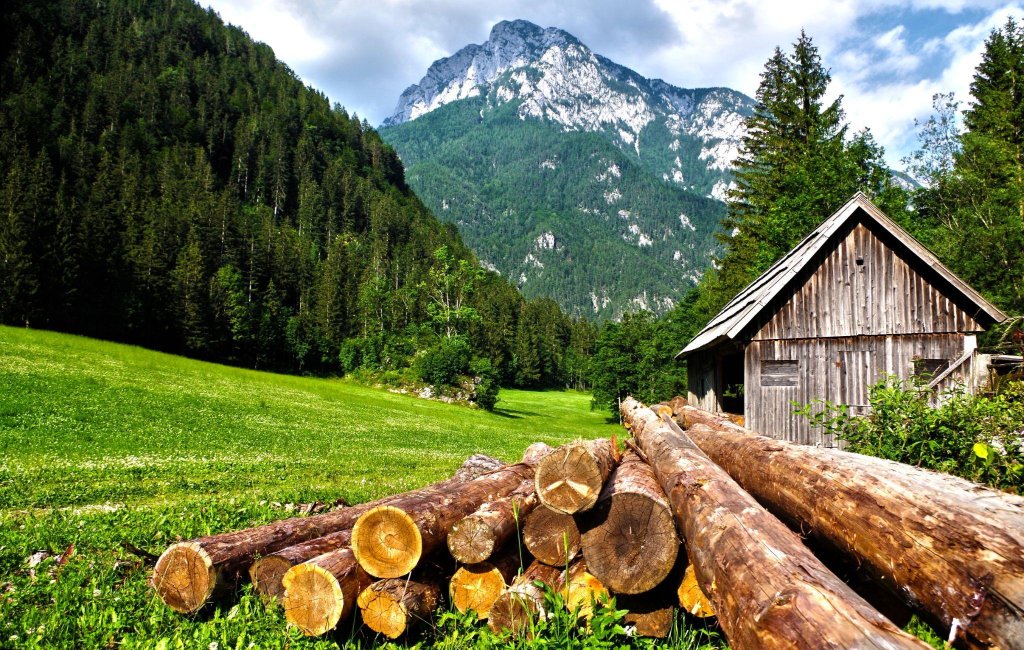Reclaimed wood is a material that has increased in popularity as of recently, with many opting to repurpose wood due to the environmental benefits. Choosing to recycle old wood products into something new is a sustainable, environmentally friendly option for anyone looking to reduce their carbon footprint while upgrading their home.
Where does reclaimed wood come from, you ask? Well, that depends on what’s available to you! Reclaimed wood can be found from old barns that have been deconstructed, wine casts, retired ships, factories or warehouses that are throwing away wooden shipping pallets, or stock farms. And once you have your hands on the recycled wood, you’ve got lots of options for its next life. There are plenty of reclaimed wood projects you can try, including repurposing wood into a new kitchen island, hardwood flooring, or an accent wall in your living room! While the creative possibilities are many, here are a few of the reasons reclaimed wood is the eco-friendly material you’ve been looking to build with.
Reusing Wood Reduces Landfill Growth
Wood may be a natural resource that is biodegradable and decomposes fully, but in a landfill condition, it takes much longer. Something simple like a wooden chair will take more than a decade to decompose in a landfill. Plus if you’re throwing away any wood products that have been painted, stained, or chemically treated, it takes even longer. According to the U.S. Environmental Protection Agency, in 2018 there were approximately 12.2 million tons of wood sitting in landfills across America.
When you choose to create something new out of reclaimed wood, you stop those products from going to sit in landfills for decades to come. Landfills are constantly expanding, but you don’t need to contribute to that!
Reclaimed Wood Improves Indoor Air Quality
Reclaimed wood in your home brings health benefits along with aesthetic benefits. Solid wood furniture or decor pieces bring fewer toxins into your home and don’t aggravate allergens as much as products made from pressed wood. Wood also absorbs the moisture in a room, improving the indoor air quality by balancing out humidity levels so a room won’t be too damp or too dry. Reclaimed wood, whether it’s in the form of a countertop, a bookshelf, or a ceiling beam, will contribute to better air quality in your home.
Repurposing Wood Reduces The Need For Logging
Approximately 30% of the Earth’s surface is covered with forest, but the increased demand for wood products or furniture places pressure on these natural forests. Opting for reclaimed wood rather than new lumber helps to reduce the need for new logging efforts. Fewer trees have to be cut down when you choose to repurpose old wood into something new, which in turn gives trees more time to grow. A tree that has more time to grow typically grows to be more durable and strong, producing a higher quality timber product if it is eventually cut down in the future.
Choosing to use reclaimed wood is also an energy-efficient choice. Reusing wood that has already been harvested and processed reduces the growth, harvest, and processing stages needed to make new timber or lumber, which reduces the general energy consumption of the process.
You Help Protect Endangered Species
In addition to reducing the need for logging, using reclaimed wood also contributes to the protection of endangered species of trees. The desire for wood furniture and other wood products has resulted in more and more species of trees needing to be cut down, putting certain species at risk of extinction. Beyond just the trees, some animals have adapted to survive in areas with specific species of trees. By reusing wood and repurposing it, you reduce the need to cut down an animal’s habitat.
Reclaimed Wood Requires Less Chemical Treatments, Paints, or Stains
The “rustic” look is already there when using reclaimed wood, without you having to spend hours strategically applying harsh chemical stains with a foam brush to achieve a certain rustic look on a new piece of wood or the stress of getting a red door instead.
Reclaimed wood also typically doesn’t require the application of refining chemicals or any products which can contribute negatively to the environment. Rather than chemically treating new wood for you to use, you don’t have to worry about treating reclaimed wood because it’s already been done!
Be Aware Of The Risks Associated with Reclaimed Wood
While using reclaimed wood has several eco-benefits, there are also risks associated with it. There’s no industry standard required for reclaimed wood, so you need to trust wherever you’re sourcing or purchasing it from. You run the risk of the wood carrying toxic chemicals, plus the wood could have nails or hardware left in it, or carry pests. Buying from trusted manufacturers of reclaimed wood can reduce those risks though! Go for a reputable source like you did for a pedestal fan rather than pulling pieces of wood from that old dilapidated barn at the end of your street.

